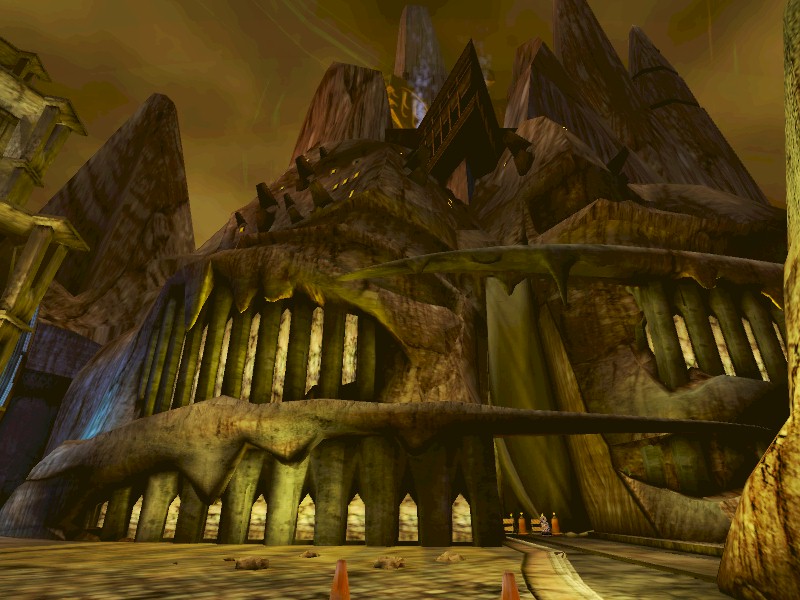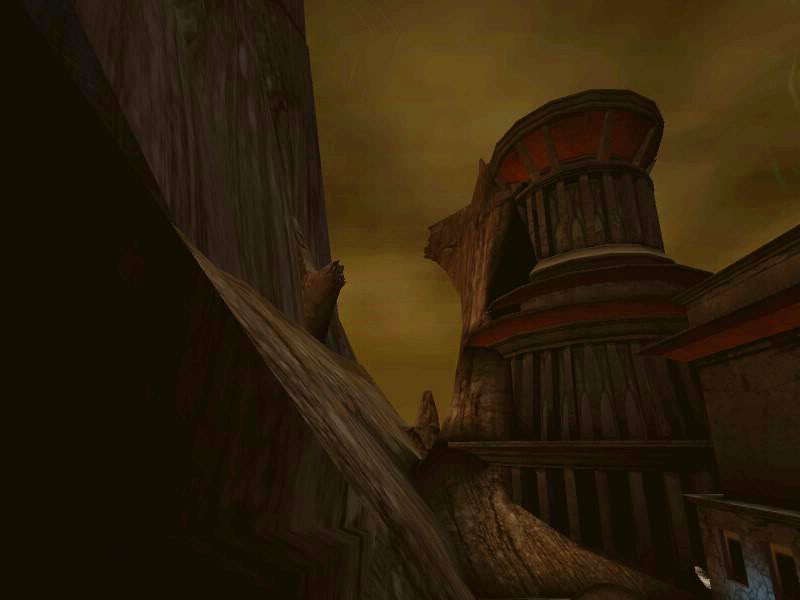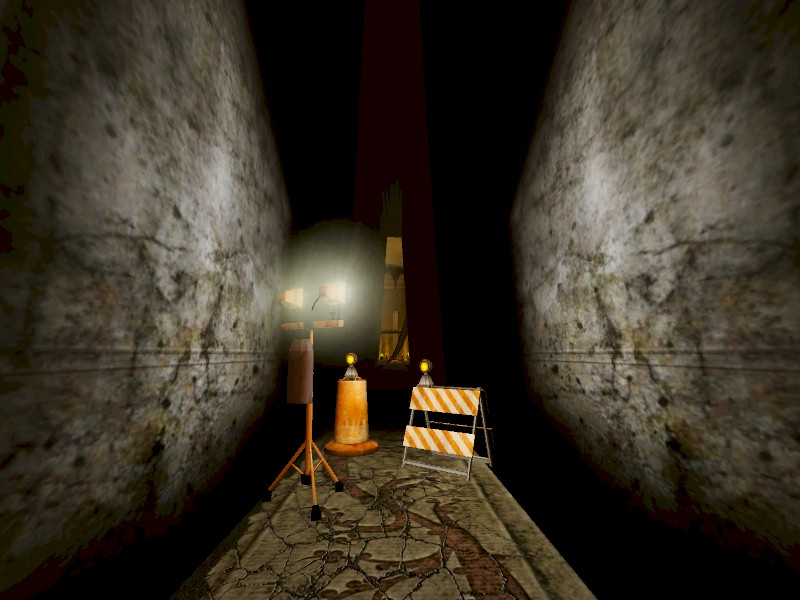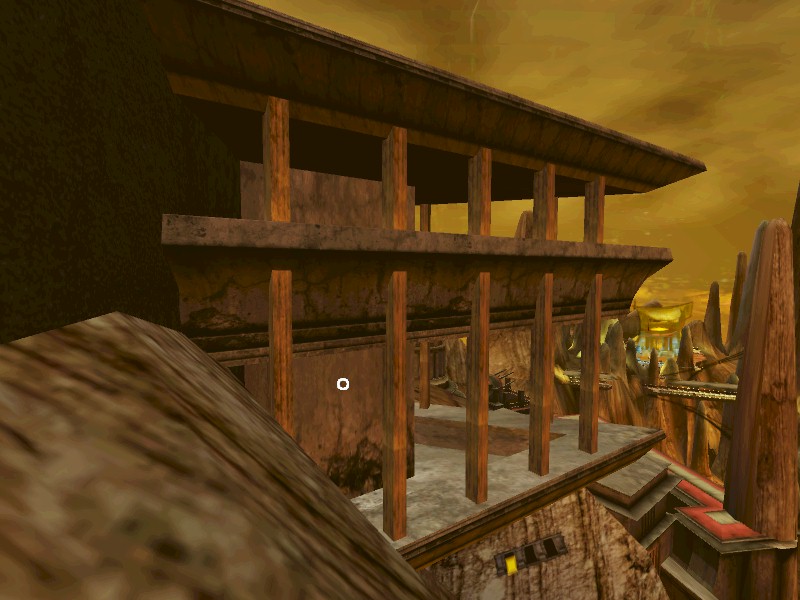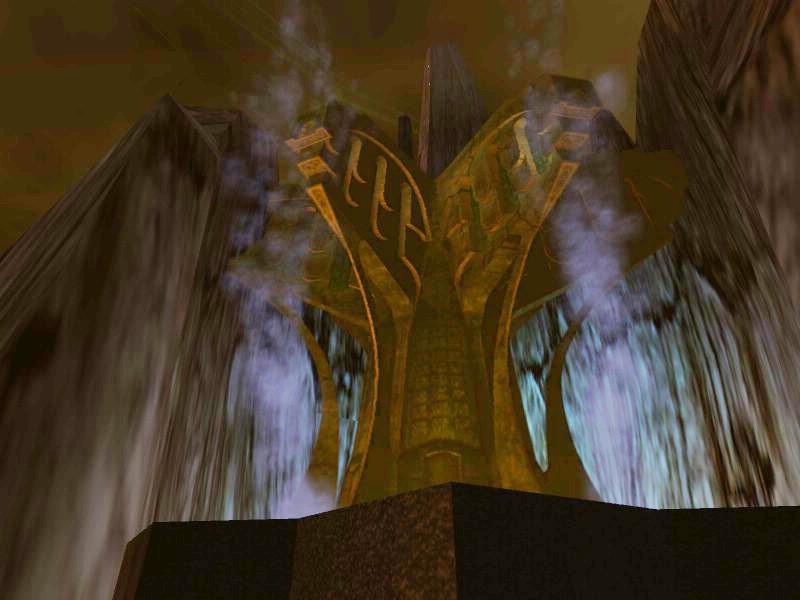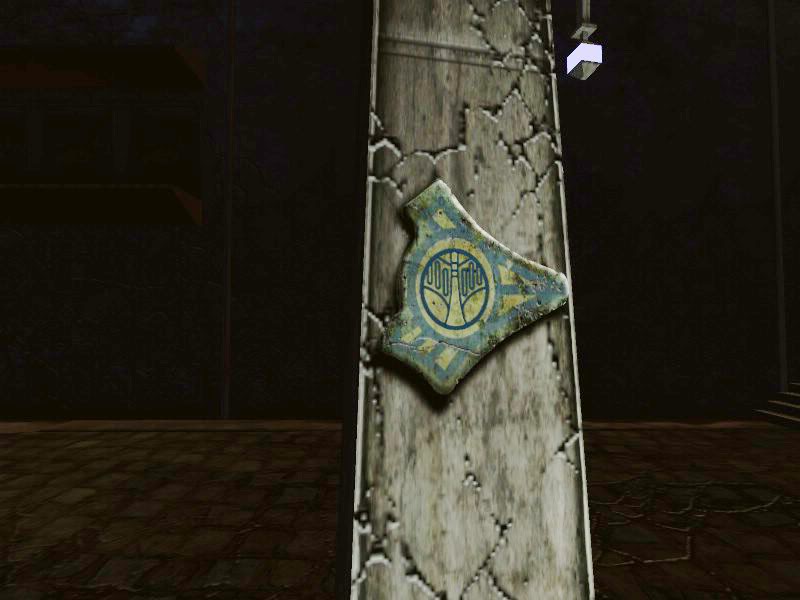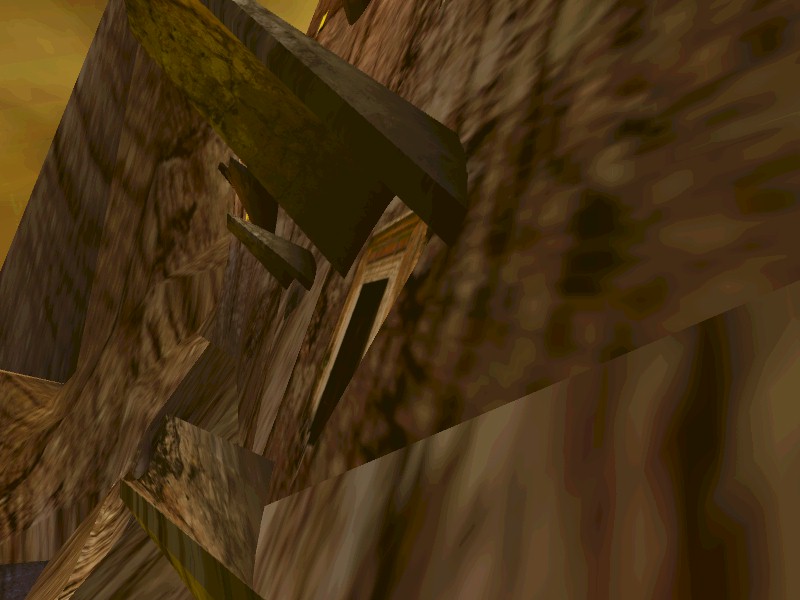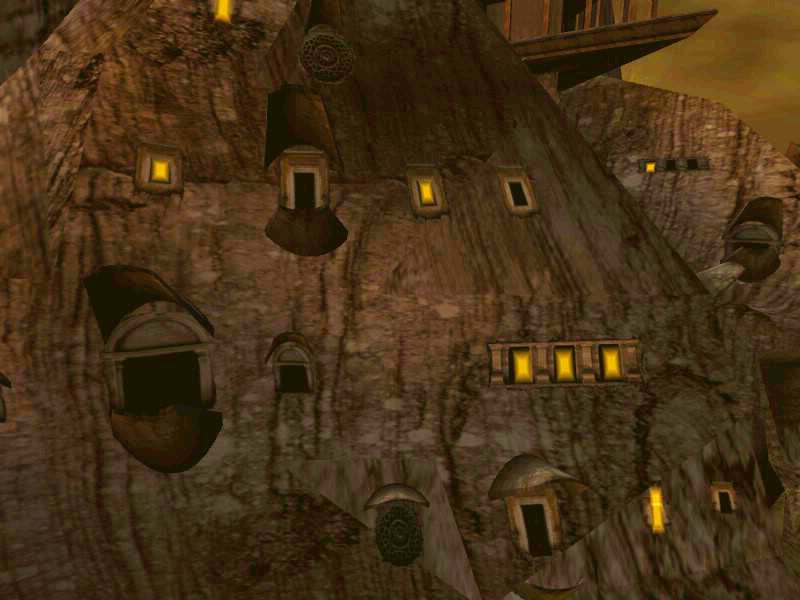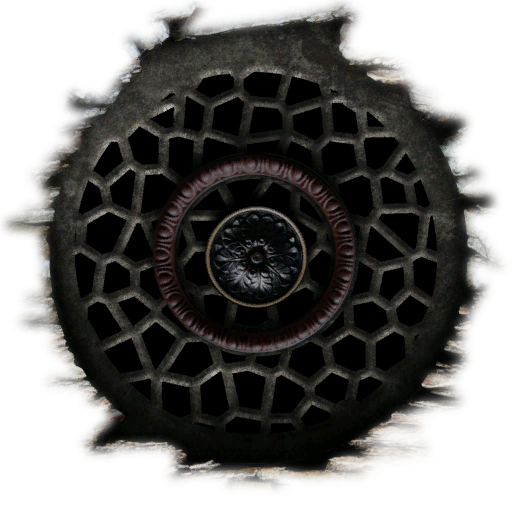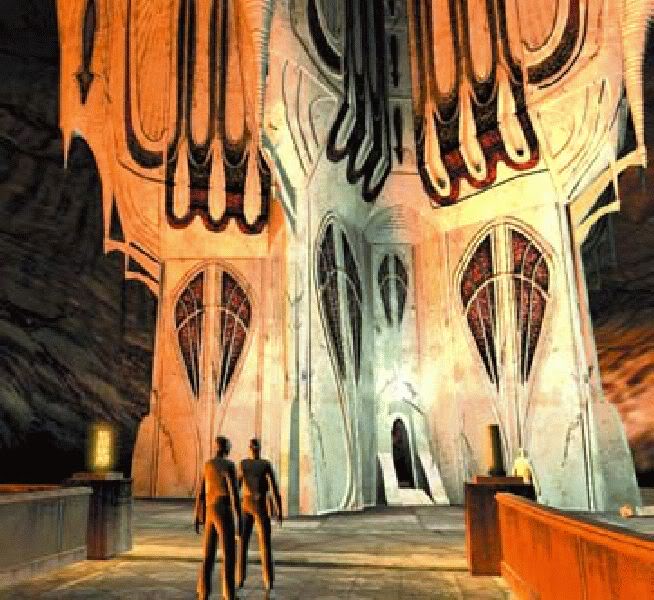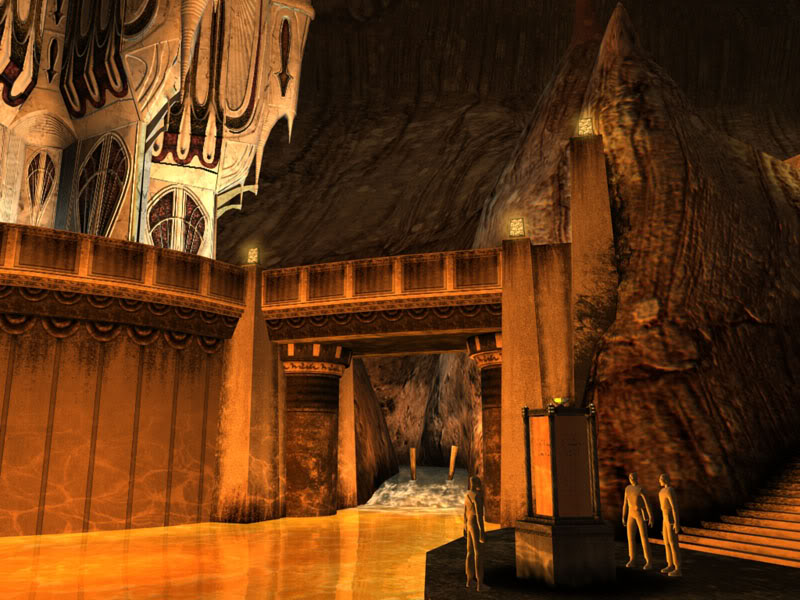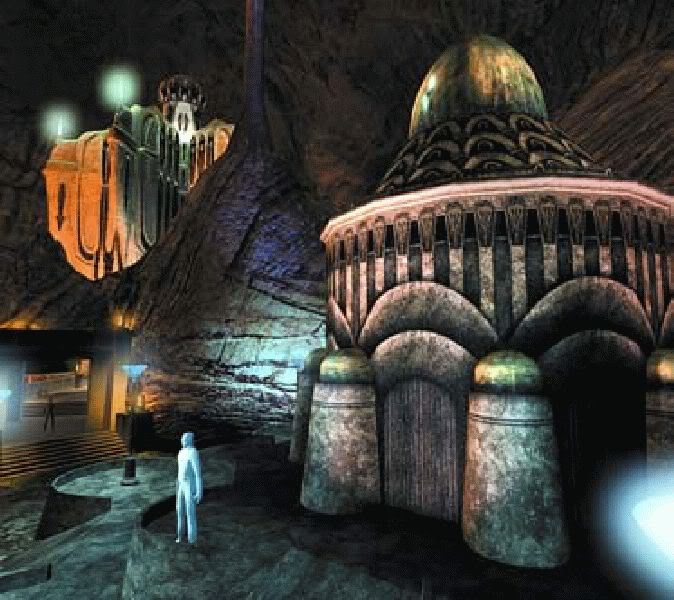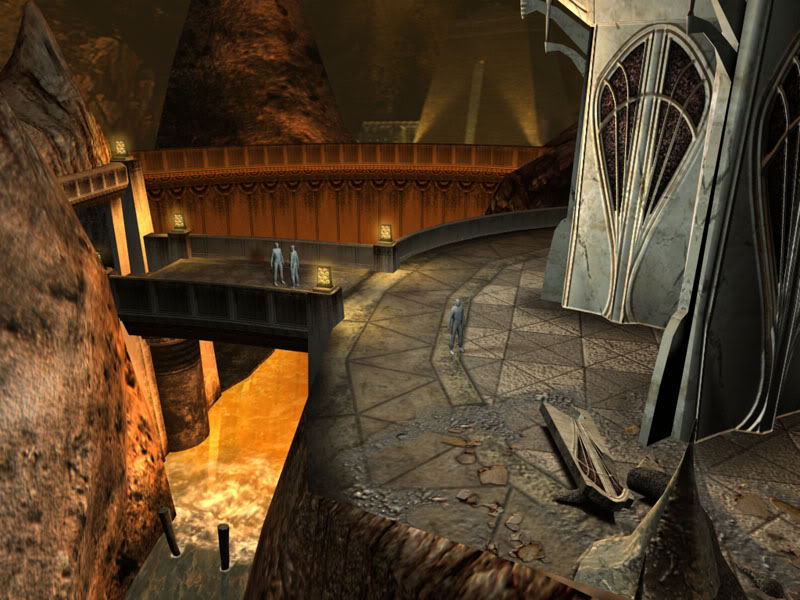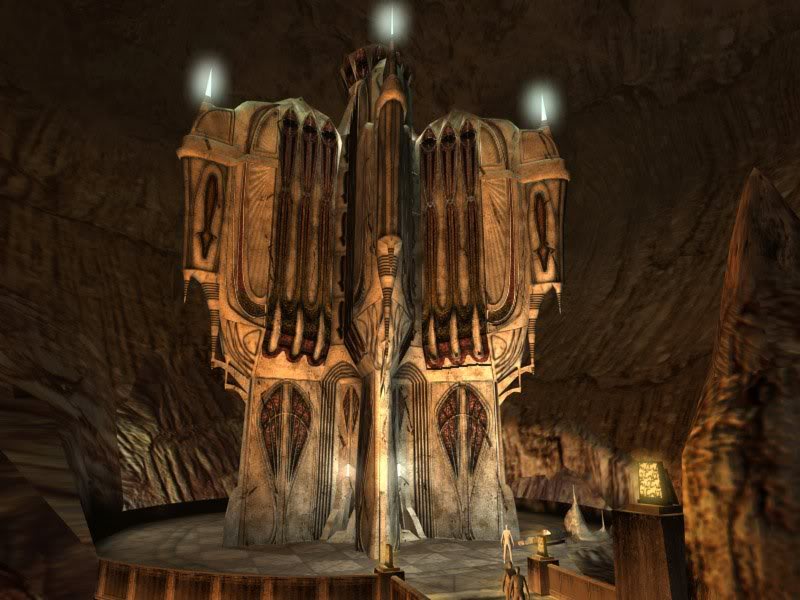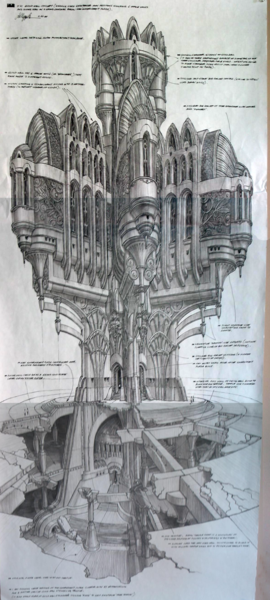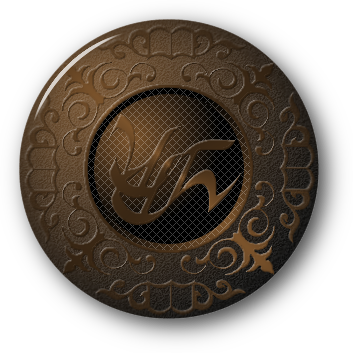

|
|
The Guild Hall is a building complex at the south end of the meridian line that runs up the Great Stairs. The Hall itself is a tower which cannot be seen from Tokotah Courtyard, since it is entirely contained inside the rock shell we can see. The Guild Hall was built atop the Temple of the Great King, which was constructed in DE 643 (7014 BCE). The temple was sealed in DE 1501 (6155 BCE) with King Ahlsendar and a number of linking books to infected Ages inside. This was done on Ahlsendar's orders to stop the spread of a biological weapon he had developed to end a war with the people of the Age of Pento. The Pento were the natives of an Age a sect of D'ni called the Judges had written specifically to recruit soldiers for an attempt to overthrow the government of D'ni. They proved a threat even after the Judges were defeated, and Ahlsendar settled on genocide as the only way to stop them permanently. The problem was that sick Pento traveled to other Ages, and the plague they carried became impossible to control. Ahlsendar, remorseful for having unleashed it to begin with, decided to sacrifice himself to stop its spread, knowing that he was abandoning the inhabitants of the infected Ages to die in order to keep the rest safe. In honor of this, the Temple of the Great King was renamed the Tomb of the Great King the following year. However, not all was sweetness and light. The prophetess Nemiya, Ahlsendar's advisor, wrote the Book of Nemiya, in which she called Ahlsendar a "fraud and imposter", and harshly criticized the creation of the plague. This sent the D'ni into a religious upheaval. Up until then, it had been generally accepted that Ahlsendar was the Great King of D'ni prophesy. After the book was published, the society fell into chaos. Up to and through 1902 DE, cult temples were sanctioned and encouraged by King Me'erta, and were built along a proposed new line for the Great Zero which appears on a map drawn by Aitrus. Among the new temples that were built were for the cults of the Tree (1843), Water (1876) and Sacred Stone (1902). Few adherents of the Temple of Yahvo remained. Me'erta's rule is filled with controversy, and when he attempted to change the oath administered by the Guilds to new members, they close ranks against him. Then he broke the seal of the Tomb of the Great King secretly at the request of his mother, Jolatha. The Pento Plague proved to be alive and well, having gone dormant in the tomb. Jolatha sickened and died after she took many of the Linking Books from the Tomb to the Temple of the Tree. Me'erta resealed the Tomb and strengthened the seals. However, it was too little, too late, and an evolved version of the Pento Plague spread among the D'ni. It was not until 2257 DE (5400 BCE) that a final cure was found for the plague. In 2504 DE (5153 BCE) during the reign of King Naygen, the first Guild Council Chamber was built atop the Tomb of the Great King despite a half-hearted protest by the priesthood. The new building hid most of the temple from view. In the same time frame, they began constructing offices and meeting rooms in the rock shell that surrounds the temple and Guild Hall, which is what we see when we look at the complex today. The suite of two rooms now called the Baron's Office is one of them. A man named Tevahr was born during that time, and became a popular religious leader. He denounced the twenty-five hundred religious sects that had sprung up by then, and preached that D'ni should return to the worship of Yahvo. In 3077 DE (4580 BCE), he also criticized the construction of buildings and offices around the Tomb. During this time, King Rakeri proclaimed the original zero meridian was the accurate one and officially changed it back to the line down the Great Stairs. In 6970 DE (687 BCE) during the reign of King Kerath, construction was begun on the current Guild Hall tower, which sits atop and further buries the Tomb, making it all but impossible to see. Its completion date was also the day when Kerath abdicated and transferred the rule of D'ni to the Guilds and the City Council, ending the line of kings. The transfer was considered to be a regency that would rule until the "real" Great King finally appeared, an event that never happened. During Atrus' restoration attempts, Master Tamon was in charge of excavating the Guild House. He uncovered the Tomb of the Great King, which turned out to be a huge chamber under the courtyard around the Guild Hall tower. Using equipment operated by Master Tergahn, they determined that there was space on the other side, a hallway filled with books written in a foreign script that presumably was Pento, and a second chamber with a linking book to Terahnee. This picture is an overview of the Guild Hall complex from Tokotah Courtyard.
The map in Tokotah Courtyard suggests that the Guild Hall and the surrounding buildings are reached by a bridge connecting a tunnel to the tower above the Hall of Kings. The remains of the bridge arch can be seen from the Palace Alcove and from the Concert Hall Bridge. The broken arch from the Hall of Kings to the Guild Hall outer shell:
This picture was taken from the southern end of the meridian line, looking north. I do not know why the DRC has a set of work lights here, since there isn't much to it.
This is a view of the structure at the top of the office area, and just below the Guild Hall tower capital. Yet another example of the complete disregard the D'ni had for placing guard rails in high locations.
This is the capital of the Guild Hall complex. Note the door that lets out onto the top of the balcony structure, which is where I'm standing. A stylized version of this capital is used on street signs to represent the complex. Note that this is not part of the Guild Hall itself; it's a separate structure on the shell of rock surrounding the cave the Guild Hall and Tomb were constructed inside. The smoke you see in this picture first appeared when Phil Henderson was up here and was caught in a collapse of part of the structure. Presumably something farther down in the rock shell caught fire and is still burning.
The signpost in Sutherland Point:
This is a view of the Guild Hall complex from atop Tokotah I. Note that there are several styles of windows. Most are square or rectangular, but there are two of three circular windows visible in this picture.
This is one of the office windows in the outer shell of the complex. Some of the windows in the rock face are lit, others are not.
Here's a better look at the windows on the side of the rock shell facing Tokotah I.
This is a detailed close-up of one of the two circular windows. There are three of this type on the rock shell; the last one is around near the upper structure. This type of window seems to have been made by drilling a series of holes through the rock, and then shaping them into a pattern resembling lacework.
The Actual Guild Hall The following images are a collection of artist's drawings of the interior of the Guild Hall cave, inside the rock shell we can see. They show the actual Guild Hall, which is not visible from anywhere we can currently go, and some surrounding structures that are not explained in any of the documents we can access. Note how small the building actually is. This was probably just a place where the grandmasters of the eighteen major guilds met to confer with each other. It's stated in available documents that the guilds all built guild halls of their own where their members lived and worked. Some of the guild halls were located in the city proper, some were built in private Ages.
Finally, here is a sketch of the Guild Hall with a cutaway of the plaza around it to show a portion of the Tomb. You can click on it to show a much larger version. |
Myst, the Myst logo, and all games and books in the Myst series are registered trademarks and copyrights of Cyan Worlds, Inc. Myst Online: Uru Live is the sole property of Cyan Worlds Inc. The concepts, settings, characters, art, and situations of the Myst series of games and books are copyright Cyan Worlds, Inc. with all rights reserved. I make no claims to any such rights or to the intellectual properties of Cyan Worlds; nor do I intend to profit financially from their work. This web site is a fan work, and is meant solely for the amusement of myself and other fans of the Myst series of games and books. |
